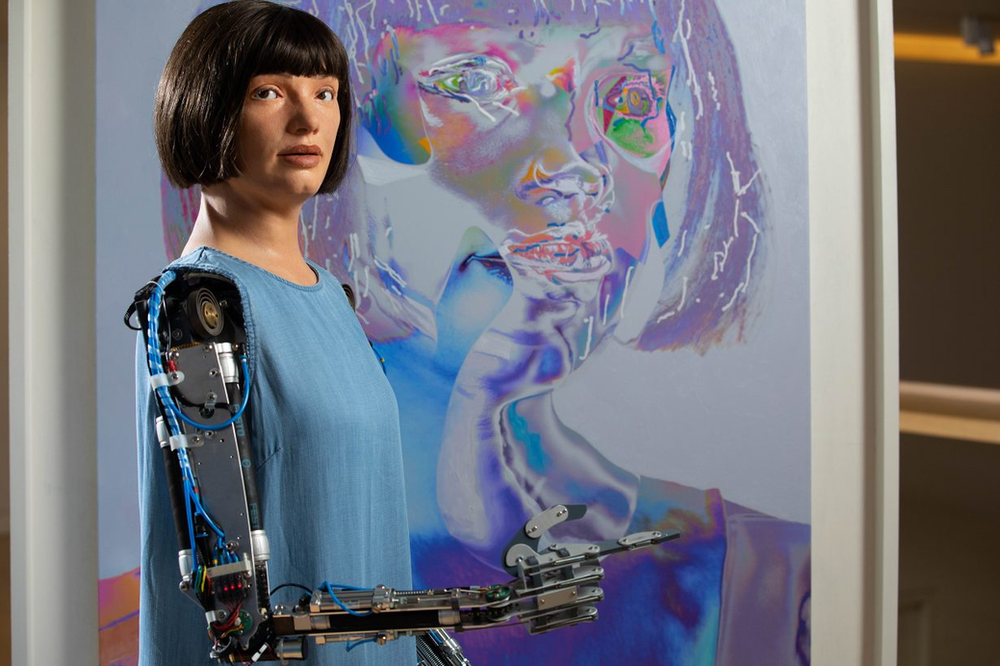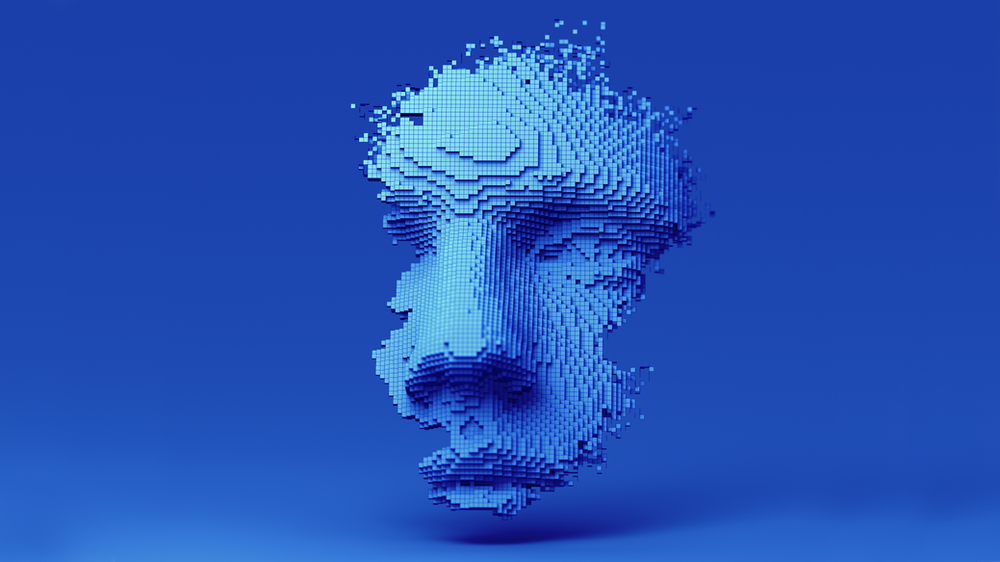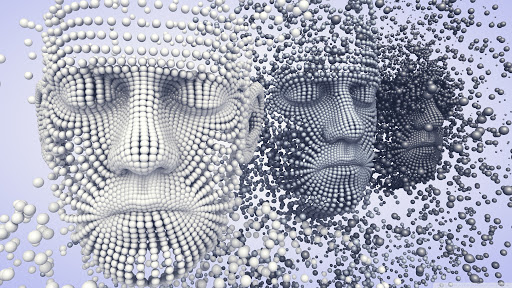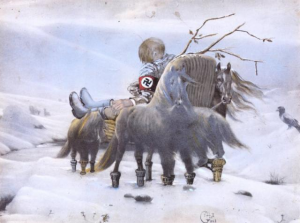As someone who appreciates art, the prospect of robots taking over the creative process worries me.
What it would imply for the field of art is something I find myself pondering.
What would happen if AI developed works that were on par with, if not superior to, human efforts?
Artificial intelligence (AI) software and hardware for creating pictures and other works of art has changed the creative process for artists of all stripes.
However, it has also inspired a range of responses, with some arguing that AI art generators are an attempt to supplant human imagination.
Is it possible for AIs like DALL-E, an artificially intelligent picture creator, to one day replace human creatives?

TO WHAT EXTENT COULD ARTIFICIALLY INTELLIGENT GENERATORS BE USED INSTEAD OF HUMAN ARTISTS?
You should understand how AI generates photos and pieces of art before making the argument that AI will replace artists.
I’m curious, then, as to the process by which AI creates its works of art. Using an AI tool like DALL-E, all you need to do to create an image is describe it in text, and the programme will produce an image that matches your description. DALL-E AI is a text-to-image art generator powered by algorithms that can be trained and ordered to produce the desired visuals.
The truth is that using AI art generators like OpenAI’s DALL-E isn’t a replacement for artists. Anne Ploin, of the Oxford Internet Institute, claims that AI art generators won’t replace human artists.
Ploin is part of a team of experts looking into the effects of AI on the creative industries. Instead, these tools will assist individuals in their efforts by speeding up the production of high-quality works.
Although some parts of the creative process may be replaced by artificial intelligence, Ploin argues in a recent report titled AI and the Arts: How Machine Learning is Changing Artistic Work that the creative decision-making part, which is critical in art, can’t be replicated by current AI technology.
In the creative arts, one must select one’s medium, develop one’s concept, and settle on one’s target audience and message. Without human input, no artificial intelligence system could ever reach such conclusions.
Art is also a way of reacting to the world around us, from politics to the environment. Therefore, an AI system can’t recreate these settings without the help of a human artist.
For instance, you’ll need to train DALL-E on a dataset with thousands of photographs and videos of what you want to generate, and you’ll also need to utilise your imagination to come up with the correct text prompts that will guide the AI art generator as it produces these assets.

Can Artists be replaced by AI?
Expression, sentiment, and individuality all find their way into the works of an artist, which are then infused with the creator’s views and ideas. Currently, AI models are only learning to replicate or recreate images.
Images cannot be explained or given context by them. In the foreseeable future, artificial intelligence systems will not be able to take the role of creative professionals.
People typically believe that AI can’t be used to make art since it can’t feel or understand the emotion poured into the creation. AI, however, may study the methods employed by artists and produce works that are very comparable to those of human creators.
Some individuals predict that AI will someday replace artists totally, but this is unlikely to happen soon. Although artificial intelligence is capable of producing technically proficient works of art, it is not yet capable of producing works of truly creative or innovative design. Only human beings are capable of that sort of stuff.

When applied to the creative process, how would you define AI?
The rise in interest in artificial intelligence (AI) is well deserved. Artificial intelligence (AI) has incredible potential, and it’s only improving. Artistic masterpieces that were created with the help of AI are already in circulation. Furthermore, you can utilise them without cost on the web.
If you need proof, consider the digital art of Daniel Stolle. A form of artificial intelligence known as a neural network is used to make his art. Neural networks may produce very accurate and lifelike images because of their ability to learn and detect patterns.
Although neural networks have accomplished a great deal, it is essential to keep in mind that they are still incapable of producing really original art, which can still only be done by people.
AI has helped many fields, not simply the visual arts. Artificial intelligence (AI) is used by modern artists in many mediums. Artificial intelligence (AI) is playing a bigger role in the creative process, whether it’s ideation or music composition.
When it comes to the creative realm, what capabilities does AI have?
Artificial intelligence is being used to many creative uses. Listed below are only a few instances of this:
To Come Up with New Concepts
Creatives can benefit from AI’s ability to help them come up with fresh ideas, as this is typically done by algorithms that examine data for trends. New ideas and thoughts are derived from the findings of these studies.
Produce Original Content in Response to User Feedback
By learning from the work of human artists, AI can produce work that is eerily similar to that of human artists. Artificial intelligence is already being used by certain modern artists to create novel visual shapes. Together, human and machine creativity may revolutionise our ability to create art and improve our quality of life.
Applying Machine Learning to Improve Preexisting Artwork
Machine learning algorithms are allowing artificial intelligence to become increasingly capable of creating original works of art and improving upon preexisting pieces. This represents a profound change in how we conceptualise and appreciate art in our daily lives.
Organize and manage art exhibits and archives
Through the use of algorithms that analyse data and find trends, AI is also used in the curating of art exhibitions and collections. Analyses aid in deciding which works of art should be included in an exhibition or collection, and where those pieces should be placed.
Build Photorealistic 3D Models for Computer-Generated Art
As AI improves, it will be able to produce 3D models that are remarkably close to real-world things, leading to increasingly lifelike works of digital art. So now digital artists may make pictures that look as natural as possible.
Repairing Broken Artwork
Artificial intelligence (AI) has the potential to repair damaged artwork, complete missing sections, and even create entirely new works of art. It should be noted, however, that not everyone is over the moon about this possibility. Some people think that artificial intelligence (AI) is superior to human intelligence and that digital artists will soon outnumber human artists.
These are just a few of the ways in which AI is already influencing the creative world.
When Compared to Human Creativity, How Does AI Fare?
We get asked a lot how AI stacks up against human ingenuity. Especially as AI becomes more pervasive in our daily lives, this is a reasonable concern to have.
To respond to this question, we must first define creativity. Generally speaking, when people think about creativity, they picture the ability to produce novel works of art like paintings, songs, dances, etc.
But there’s so much more to creativity than that. Creativity is the power to think of novel approaches to old issues. It’s the capacity to form novel associations and interpretations of familiar stimuli. To put it briefly, it’s being able to think creatively.
The Battle of Artificial Intelligence vs. Human Ingenuity
There are ways in which AI could be more inventive than humans. First of all, AI doesn’t have the same restrictions that people do. The substance of our minds and the lessons we’ve learned from our pasts define the boundaries of our potential.
On the other hand, AI has access to data sets numbering in the billions, allowing it to make correlations that humans simply cannot.
Also, AI is not limited by the norms that we are. Our assumptions, beliefs, and opinions limit us. No, AI is not. That’s why AI has the capacity to generate completely novel concepts and approaches.
Intent, a crucial part of creativity that AI currently lacks
All existing AI systems are geared toward producing outputs (pictures, text, etc.) rather than making something with a particular goal or intention in mind.
When it comes to originality, humans still have the upper hand over machines.
Human artists have a clear goal in mind when they begin a painting or a sculpture. They have a concept in mind of what they want to make and why.
Having a purpose in mind while creating something is what separates creative work from the rest. It’s what separates it from regular image-making or editing software. Unfortunately, it’s also something that present AI technology is not yet capable of recreating.
How difficult is it for AI to replace creative professionals?
The potential for artificial intelligence to be used in the artistic process is gaining more and more attention as digital technologies advance.
Since AI has already been used to create hundreds of images and compose entire songs, it’s not hard to imagine a future where it completely replaces human creators.
To replace artists with AI, however, presents a number of difficulties.
Among the difficulties is the fact that the procedure of creating something is frequently valued above the finished product itself. Even if a painting isn’t particularly good on its own, the story of how it came to be can give it depth. This lack of humanity is a common criticism levelled towards AI-generated artwork.
Works of human creativity are also safeguarded by copyright legislation at now. It’s not clear if copyright law would protect AI-generated artwork, which could hinder its commercial potential.
Finally, there are many who believe that because AI will never be able to fully replace humans, it will never be able to produce truly great art. Even though AI has made great strides in recent years, it still has a ways to go before it can totally replace human artists.
Is there any way to predict how much of an effect AI might have on the art market’s financial stability?
There is a greater availability of artwork than there is of artwork.
The increased rate at which artists may create new pieces of art is one of AI’s most noticeable effects on the art world.
An artist may now produce thousands of images in the time it would take to produce a single image by hand, thanks to image generators and other digital technology. Due to this, there has been a meteoric rise in the availability of artwork.
A Phenomenal Rise in Original Work Generated by AI
One way in which AI is affecting the arts is by broadening the kinds of art that can be made. As AI algorithms improve, they become increasingly capable of creating visuals that look almost identical to those made by humans.
However, these images often evoke different emotions or have different meanings because they lack the intent or creative spark that human artists bring to their work. Consequently, a wide variety of original works of art have emerged from the creative minds behind AI.
Legal Concerns Regarding Copying of AI Art
Last but not least, AI is having a major effect on the economics of the art industry and copyright law. It might be difficult to ascertain the rightful owner of AI-generated artworks because they are frequently based on existing photos or sets of photographs.
That can lead to disagreements and legal action over ownership, which can have serious financial consequences for the art market.
In sum, AI is having a major economic impact on the creative sector. Artificial intelligence (AI)-generated artworks will have a major impact on the art market and art prices as they become more widely available. Keep an eye on it as the years progress.
Is There a Future for Humanity’s Creative Class if AI Takes Their Jobs?
What will happen to occupations that demand creative talents, like those in the arts, is uncertain, although certain jobs are already being lost to AI and automation. What, after all, will become of artists if robots can produce many images in a fraction of a second?
Several scenarios are on the table. First, AI could speed up the artistic process, allowing artists to create more art in less time resulting in more art being produced overall, which would be great for society.
Two, AI-dependent “autonomous artists” may one day appear. That might cause a decline in the number of “real” artists and cause a sea change in the nature of art.
Last but not least, AI-generated art has the potential to become so pervasive that it replaces art created by people, driving up demand for human artists and the price of traditional arts.
The long-term effects of AI replacing artists in society are speculative at best. One thing is for sure, though: humans will no longer play the same central part in the artistic process that they once did.
And although that’s bound to make some people nervous, it’s also a fantastic chance for us to open our minds to fresh approaches to the arts.
No matter what happens, though, we must never forget that art is ultimately about the human experience and the bonds we have as a species, and not just about how pretty something looks.
Also, as long as we keep that in mind, AI will never be able to fully replace us.
Conclusion:
Although artificial intelligence (AI) is already displacing artists in some areas, it has a long way to go before it can fully assume the position of an artist. Artificial intelligence now has a long way to go before it can replace people in a variety of roles, especially those requiring imagination and empathy.
AI may be able to imitate some facets of the creative process, but it will never be able to fully replace the human one. Even if more and more art is produced by artificial intelligence in the future, there will always be a need for human artists.
That being said, creative types need not fret. Your jobs are safe for now. It is wonderful that you are continuing to produce and exhibit your magnificent artwork.


